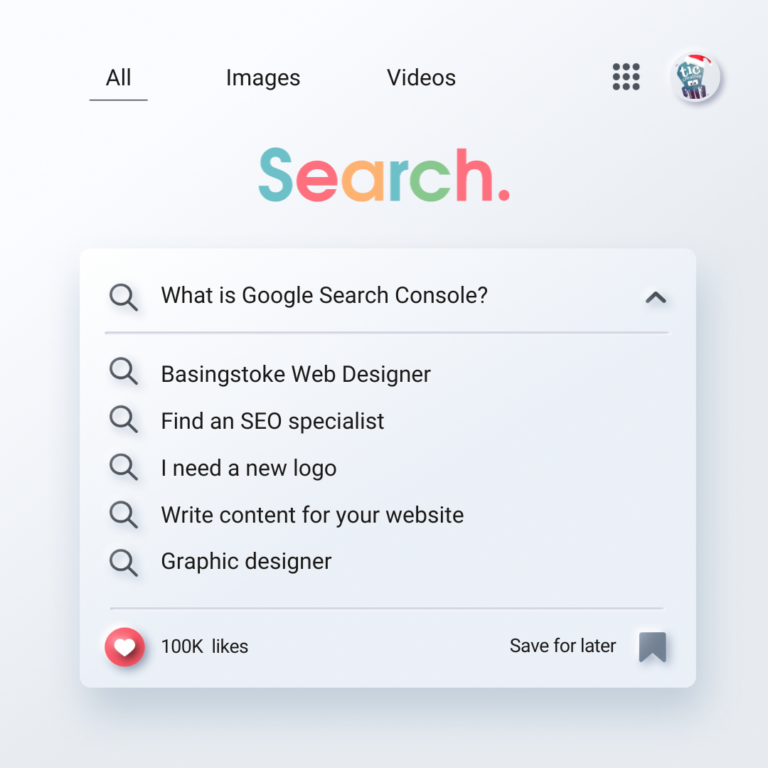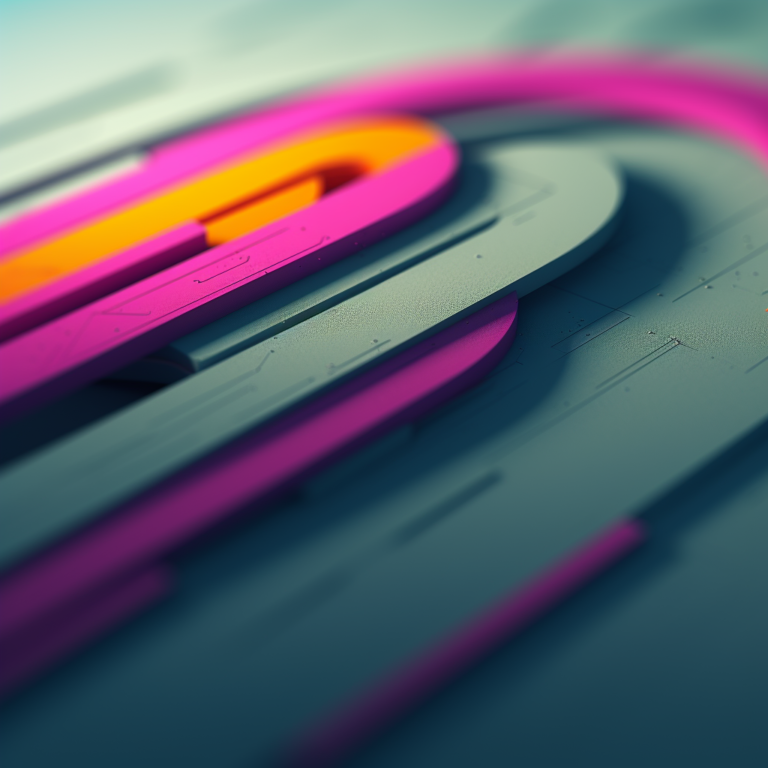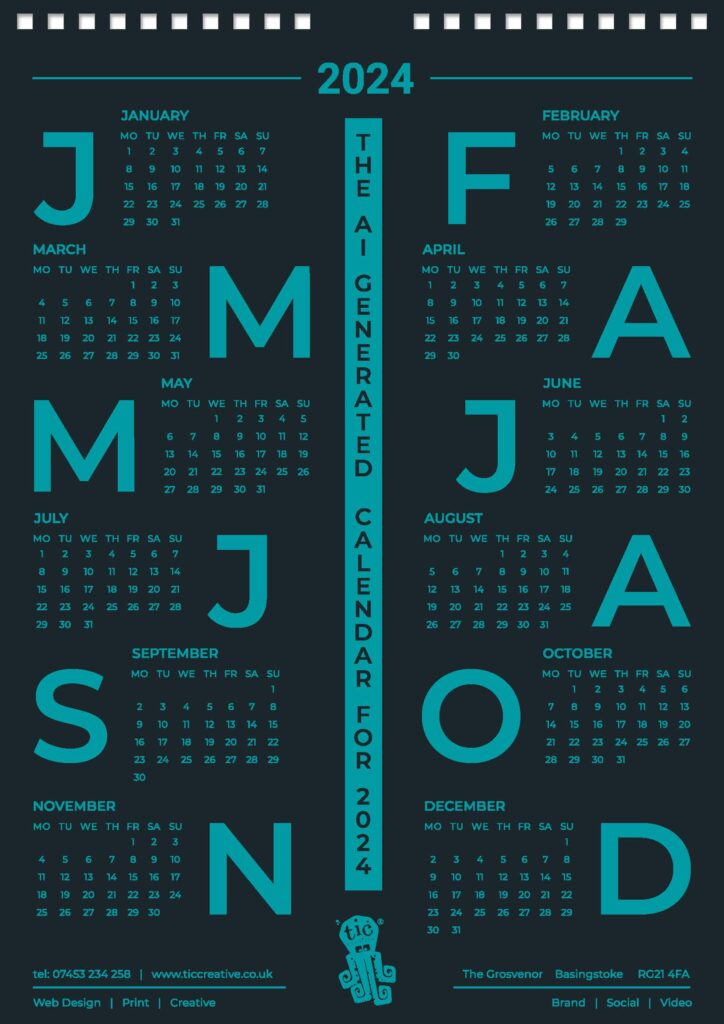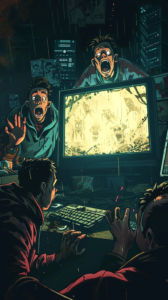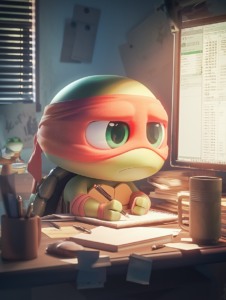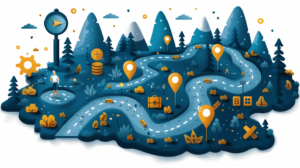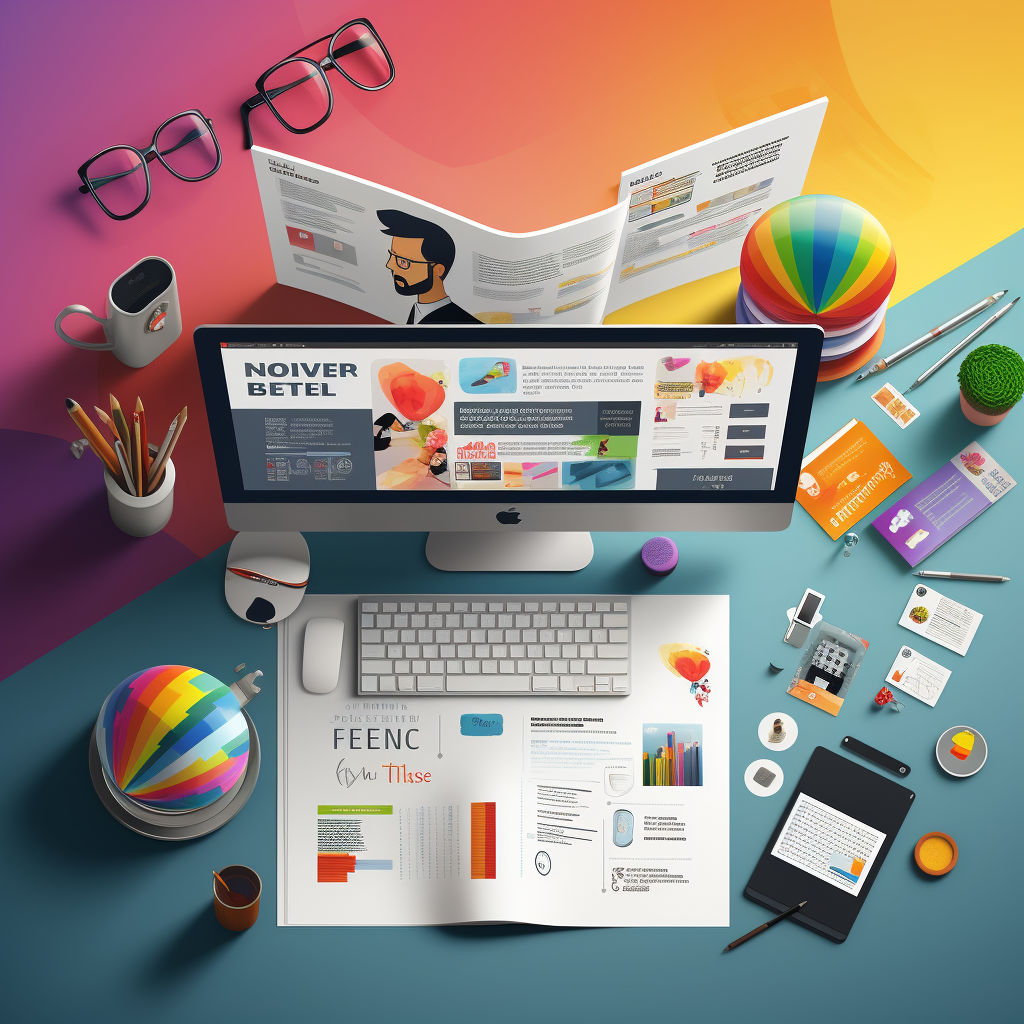
In the dynamic realm of web design, 2023 has been a year marked by remarkable innovation and stylistic evolution. As a pivotal aspect of the digital experience, web design not only shapes how we interact with the virtual world but also reflects broader societal and technological trends. For businesses and designers alike, staying abreast of these trends is not just a matter of aesthetic preference but a crucial strategy for ensuring relevance and user engagement in a highly competitive digital landscape.
This year, we witnessed a harmonious blend of aesthetics and technology, where designs were not only visually compelling but also intelligently integrated with advanced functionalities. From minimalist layouts that prioritise user experience to the sophisticated use of AI for personalised interactions, web design in 2023 has set new standards in both form and function.
As we look towards 2024, it’s clear that the momentum of innovation shows no signs of slowing down. The forthcoming trends and technologies promise to further reshape the web design landscape, offering exciting opportunities and new challenges. In this article, we delve into the defining elements of web design in 2023, the challenges faced by designers and businesses, and what we can anticipate as we step into 2024.
Key Trends in Web Design for 2023
Minimalist and Clean Designs
2023 has further solidified the dominance of minimalist design in the web design arena. This approach, characterised by its clean lines, uncluttered layouts, and restrained use of colour, has continued to be popular among designers for its ability to enhance user experience. The minimalist trend is not just about aesthetic appeal; it’s deeply rooted in functionality. Websites embracing this design philosophy typically have faster load times and easier navigation, making them more accessible and user-friendly.
One notable example is the redesign of the Acme Corporation website. With its spacious layout, muted colour palette, and focused content, the site exemplifies the minimalist ethos. Another standout is the GreenTech Innovations site, which uses ample white space and minimal text to guide visitors smoothly through their offerings.
Incorporation of Advanced Technologies
The year 2023 also witnessed an unprecedented integration of advanced technologies in web design, notably AI and machine learning. These technologies have opened up new frontiers in creating highly personalised user experiences. AI algorithms can now analyse user behaviour to provide customised content and recommendations, making each visit to a website more relevant and engaging.
A prime example of AI application in web design is seen in the retail sector, where e-commerce platforms like ShopSmart use machine learning to offer personalised shopping experiences. Based on user browsing history and purchase patterns, ShopSmart presents users with tailor-made product suggestions, enhancing the likelihood of purchase.
Moreover, the emergence of AR/VR in web design has been particularly notable in sectors like real estate and education. RealitySpace, a virtual property viewing platform, uses VR to offer immersive property tours, allowing potential buyers to explore properties remotely in a highly interactive manner. Similarly, educational websites have begun integrating AR features to provide more engaging and interactive learning experiences, like the HistoryAlive platform, which brings historical events to life through augmented reality.
Focus on Accessibility and Inclusivity
The year 2023 marked a turning point in web design with a heightened focus on accessibility and inclusivity. Recognising the imperative to create websites that are usable by everyone, including individuals with disabilities, web designers and developers have increasingly prioritised accessibility features. This trend is not only driven by a commitment to social responsibility but also by practical considerations, as accessible websites reach a wider audience and often provide a better user experience for all.
Legislation and guidelines such as the Web Content Accessibility Guidelines (WCAG) and the Americans with Disabilities Act (ADA) have played a crucial role in this shift. These frameworks provide comprehensive standards for making web content more accessible, covering aspects like text readability, navigation ease, and compatibility with assistive technologies. Websites like AccessibleWeb and InclusiveDesign have led the charge in this area, showcasing how design and functionality can work hand in hand to accommodate users’ diverse needs.
Bold Colours and Dark Mode
Another prominent trend in 2023 was the strategic use of bold colours and the incorporation of dark mode options in web design. Bold and vibrant colours have been employed not just for their aesthetic appeal but also for their ability to direct user attention and improve the overall user experience. Websites like CreativeSplash and DigitalArtGallery exemplify this trend, using bold colour palettes to create visually striking and memorable designs.
Dark mode, on the other hand, has emerged as a popular feature for enhancing visual comfort, especially in low-light environments. This feature, which allows users to switch to a dark colour scheme, reduces eye strain and conserves battery life on mobile devices. Its implementation has become increasingly common, with platforms like NightReader and Moondust offering dark mode as a standard option. This trend reflects a broader shift towards user-centric design, where user comfort and preferences are given paramount importance in the design process.
Interactive and Immersive Experiences
In 2023, web design witnessed a significant shift towards creating more interactive and immersive experiences, a trend that has redefined user engagement on the web. This shift is characterised by the integration of animations, dynamic content, and micro-interactions, which have become integral elements of modern web design. These features not only make websites more engaging and entertaining but also enhance usability and the overall user experience.
Animations have been used to add a layer of dynamism and personality to websites. Rather than being purely decorative, these animations serve functional purposes, such as guiding users through a site, providing feedback on user actions, or explaining complex processes in an intuitive way. Websites like Animotion and InteractiveStory have set new standards in this area, using animations to create compelling narratives and guide user interactions.
Dynamic content is another key aspect of this trend. Websites are increasingly moving away from static presentations to content that changes based on user interactions or preferences. This approach keeps the user experience fresh and engaging, encouraging visitors to return. DynamicNews, for example, tailors its news feed based on the reader’s past interactions and interests, ensuring that users are always presented with content that is relevant and engaging to them.
Micro-interactions have also gained prominence, enhancing the user experience through subtle effects and feedback in response to user actions. These small animations or changes – like a button changing colour when hovered over or a sound playing when a task is completed – make the user experience more intuitive and satisfying. Sites like UserEngage and FunFeedback have mastered the art of micro-interactions, creating interfaces that feel responsive and alive to user inputs.
Overall, the move towards more interactive and immersive experiences in web design reflects a deeper understanding of how users interact with digital platforms. By focusing on these elements, designers are able to create websites that are not only visually appealing but also highly functional and user-friendly, setting the stage for an even more interactive future in web design.
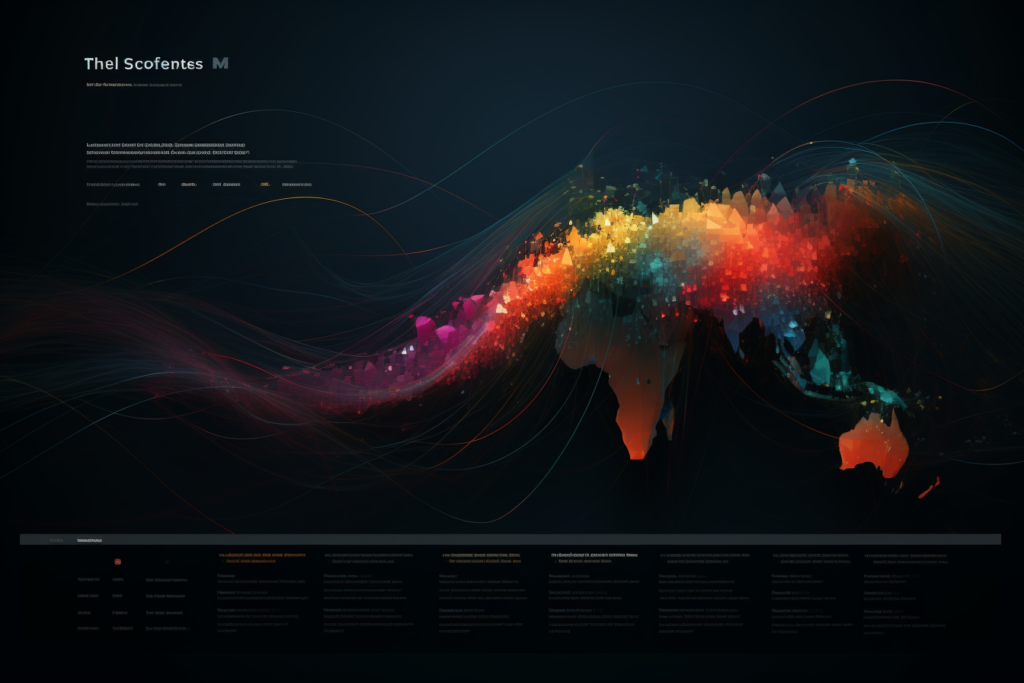
Section 2: Challenges Faced in 2023
Adapting to New Technologies
One of the significant challenges faced by web designers in 2023 was adapting to rapidly evolving technologies. The integration of AI, AR/VR, and advanced interactive features, while offering immense potential, also demanded designers to continuously update their skills and knowledge. Keeping pace with these technological advancements was not just about learning new tools or coding languages; it involved a fundamental rethinking of design approaches and user interaction models. For many, this meant investing time in ongoing education and professional development, often balancing these demands with the day-to-day pressures of project work.
Ensuring Website Security
As web technologies advanced, so too did the sophistication of cyber threats. In 2023, web designers faced the ongoing challenge of ensuring website security. This involved not only protecting sensitive user data but also safeguarding websites against increasingly complex forms of cyber attacks such as ransomware, phishing, and DDoS attacks. The responsibility of implementing robust security measures became a paramount concern, requiring designers to be well-versed in the latest security protocols and collaborate closely with cybersecurity experts.
Impact of Global Events
Global events in 2023 also had a profound impact on web design trends and business operations. Economic fluctuations, for example, influenced clients’ budgets and priorities, leading to shifts in project scopes and timelines. Additionally, the increasing awareness of environmental issues led to a growing demand for sustainable web design practices, challenging designers to find eco-friendly solutions without compromising on functionality or aesthetics.
The ongoing evolution of remote work culture, accelerated by the events of the past few years, also continued to influence web design. This shift required designers to create websites that were not only visually appealing and functional but also optimised for a variety of devices and network conditions, accommodating the diverse working environments of users.
Overall, the challenges faced by web designers in 2023 were multi-faceted, stemming from the need to adapt to new technologies, ensure robust security measures, and respond to the impact of global events. These challenges, while demanding, also spurred innovation and growth in the field, pushing designers to develop new skills and adapt to the changing digital landscape.
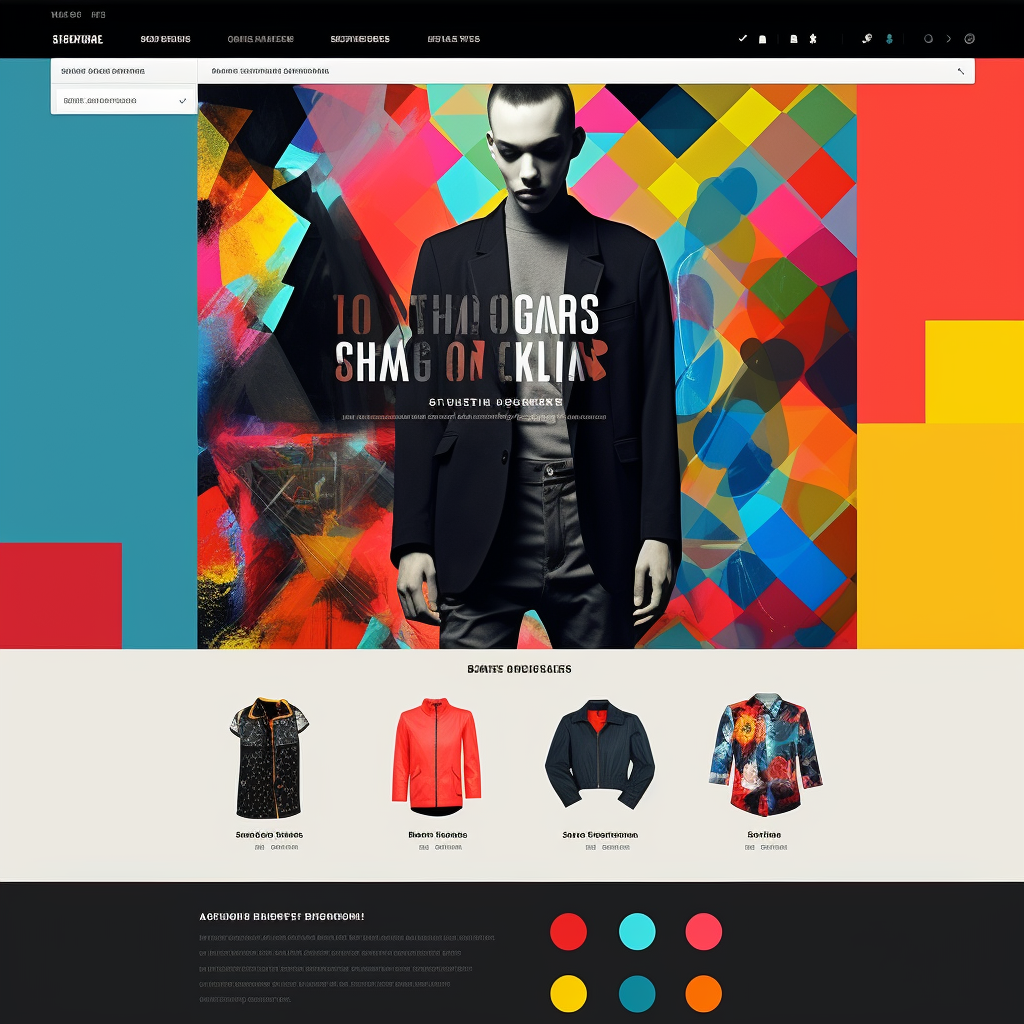
Section 3: What to Expect in 2024
Advancements in AI and Automation
Looking ahead to 2024, one of the most significant trends set to shape the web design industry is the continued advancement of AI and automation. AI technologies, which have already begun to transform the landscape in 2023, are poised to further revolutionise web design, potentially automating entire design processes. This evolution will see AI not just as a tool for creating personalised user experiences but as an integral part of the design process itself.
AI-driven design tools are expected to become more sophisticated, capable of generating entire website layouts and aesthetics based on a set of predefined parameters or user data. This would significantly streamline the design process, allowing for rapid prototyping and iteration. Moreover, AI could play a crucial role in user testing, autonomously evaluating and refining design elements based on user interaction data.
The use of AI in web design also opens the door to more adaptive and responsive websites that can change in real-time based on user behaviour or environmental factors. This level of dynamic personalisation will not only enhance user engagement but also improve accessibility, as AI can automatically adjust content and interfaces to suit individual user needs.
Sustainability in Web Design
Another key trend that will continue to gain momentum in 2024 is the emphasis on sustainability in web design. As global awareness of environmental issues grows, the digital sector is increasingly recognising its role in promoting eco-friendly practices. Sustainable web design goes beyond the aesthetics and functionality of a website; it encompasses the entire lifecycle of the site, including its development, hosting, and long-term maintenance.
In practical terms, sustainable web design involves optimising websites for energy efficiency, which can be achieved through strategies like minimalist design, efficient coding, and selecting green hosting providers. Websites are likely to become more data-efficient, reducing their carbon footprint by minimising the amount of data transferred during user interactions.
Additionally, there is a growing trend towards using renewable energy sources for hosting services and prioritising recyclable and biodegradable materials for any physical components associated with web design. Designers and businesses are also expected to adopt more comprehensive sustainability policies, considering the environmental impact of their work at every stage of the design and development process.
In 2024, these trends point towards an industry that is not only technologically advanced but also ethically and environmentally conscious. The integration of AI and automation in web design will drive innovation and efficiency, while the focus on sustainability reflects a broader commitment to responsible and mindful design practices.
Greater Integration of Social Media Features
As we move into 2024, the integration of social media features into web design is expected to deepen, further blurring the lines between standalone websites and social media platforms. This trend stems from the recognition that social media is an integral part of the digital experience for a vast majority of users. Integrating social media features directly into websites offers several benefits, including enhanced user engagement, increased traffic, and improved brand presence.
We are likely to see websites incorporating live social media feeds, direct sharing options, and even more interactive elements like social media-based comments and reviews. This integration allows for a more dynamic and interconnected digital experience, where users can engage with content across multiple platforms seamlessly. For instance, e-commerce sites might integrate Instagram feeds to showcase products in a more lifestyle-oriented context, while corporate websites could incorporate LinkedIn features to enhance professional networking.
Moreover, the integration will not just be about embedding content; it’s also about leveraging the data analytics and targeted advertising capabilities of social media platforms to enhance marketing strategies and user experience. This could involve personalising website content based on a user’s social media interactions or using social media insights to drive content creation and product development.
Evolution of E-commerce
In the realm of e-commerce, 2024 is poised to witness several groundbreaking trends that will further transform the online shopping experience. E-commerce platforms are expected to adopt more advanced payment options, including cryptocurrencies and other digital currencies, to cater to a wider range of customer preferences. This expansion in payment options not only offers convenience but also opens up new markets, especially in regions where traditional banking systems are less prevalent.
Augmented Reality (AR) is set to play a major role in enhancing the online shopping experience. AR technology allows customers to visualize products in a real-world context, be it trying on clothes virtually or seeing how a piece of furniture would look in their living room. This immersive approach reduces the uncertainty often associated with online shopping and can lead to higher satisfaction and lower return rates.
Additionally, the integration of AI and machine learning in e-commerce will become more refined, offering even more personalised shopping experiences. AI-driven recommendation engines will become more accurate in predicting customer preferences, and chatbots will become more sophisticated, providing assistance that closely mimics human customer service representatives.
The evolution of e-commerce in 2024 will not only make online shopping more convenient and engaging but also more personalised and interactive, reflecting the broader trends in web design towards creating more immersive and user-centric digital experiences.
Continued Emphasis on User Experience (UX)
As we look towards 2024, one constant that remains at the forefront of web design is the emphasis on User Experience (UX). The drive to create seamless, intuitive, and enjoyable online experiences has been a guiding principle in 2023 and will continue to shape the design decisions in the coming year. This persistent focus on UX underscores the industry’s recognition of the user’s central role in web design.
The future of UX lies in personalisation, accessibility, and responsiveness. Websites are expected to become more adaptive to individual user needs and preferences, offering bespoke experiences that cater to a wide range of audiences. The importance of accessibility in UX design will further solidify, ensuring that websites are usable and enjoyable for everyone, including those with disabilities. Additionally, as technology evolves, responsiveness in design will not just be about adjusting to different screen sizes but also about reacting to user behaviour and feedback in real-time.
Read our post about MAXIMISING USER ENGAGEMENT THROUGH EFFECTIVE LAYOUTS
Conclusion
Reflecting on the year 2023, it has undoubtedly been a period of dynamic growth and innovation in web design. From the continued popularity of minimalist designs to the groundbreaking integration of AI and AR/VR technologies, the industry has seen a plethora of trends that have enhanced both aesthetics and functionality. The challenges faced, including adapting to new technologies and responding to global events, have spurred creativity and resilience among designers.
As we approach 2024, there is much to be excited about. The forthcoming advancements in AI and automation, the growing emphasis on sustainability, and the deeper integration of social media features promise to further reshape the landscape of web design. The evolution of e-commerce and the continuous focus on enhancing UX point towards a future that is not only technologically advanced but also user-centric and environmentally conscious.
References
- “Web Content Accessibility Guidelines (WCAG)” – W3C
- “The Americans with Disabilities Act (ADA)” – ADA National Network
- “The Future of AI in Web Design” – TechCrunch
- “Sustainable Web Design Practices” – Smashing Magazine
- “The Integration of Social Media in Web Design” – Forbes
- “Emerging Trends in E-commerce” – Harvard Business Review
- “The Evolution of User Experience Design” – UX Magazine
These sources, along with the insights from leading web designers and developers, have been instrumental in shaping the trends and predictions discussed in this article.

